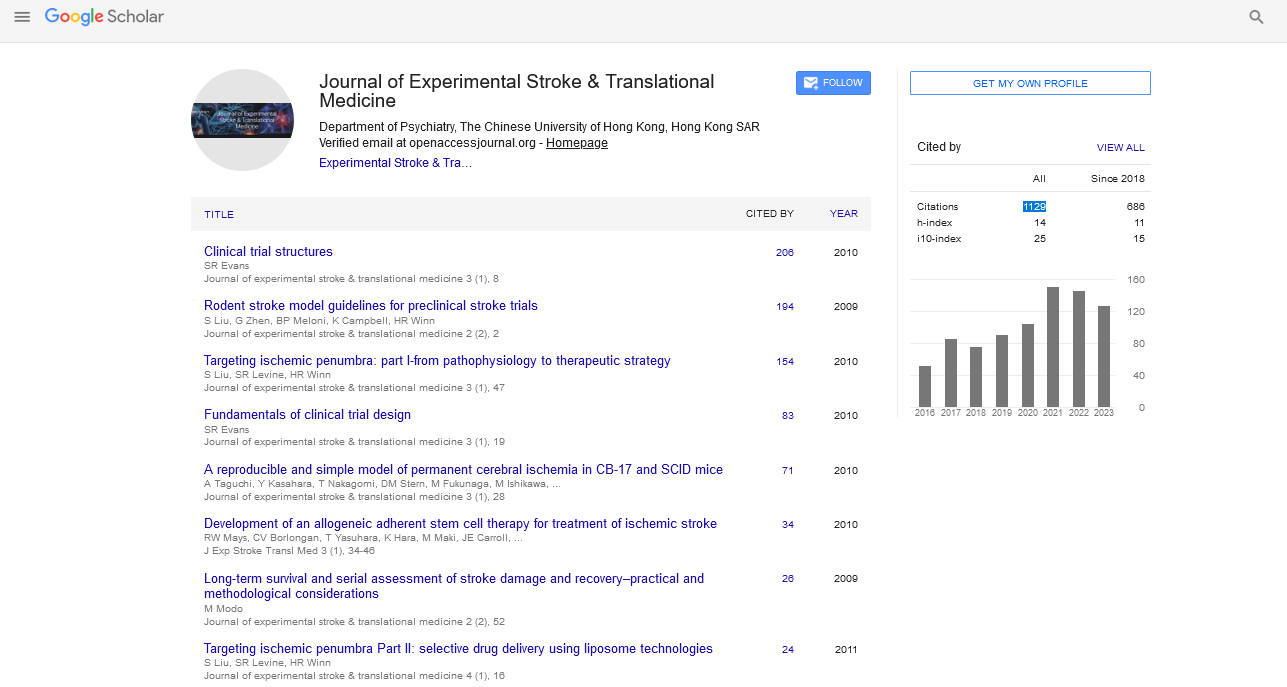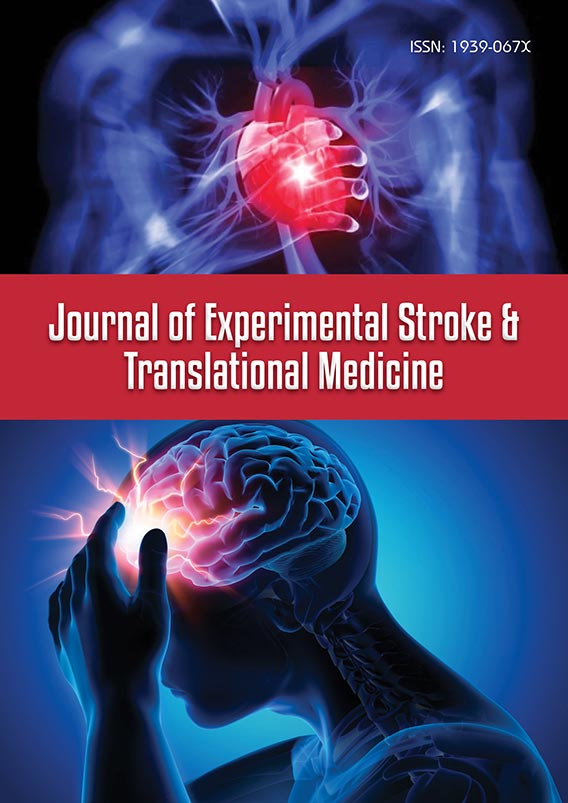Perspective - Journal of Experimental Stroke & Translational Medicine (2024) Volume 16, Issue 6
Brain Stem Stroke: A Complex Neurological Event
- Corresponding Author:
- Erin D. Wieruszewski
Department of Neurology, University of Seville, Sevilla, Spain
E-mail: wieruszew.erin@mayo.edu
Received: 04-Nov-2024, Manuscript No. jestm-24-153510; Editor assigned: 7-Nov-2024, PreQC No. jestm-24-153510 (PQ); Reviewed: 21-Nov-2024, QC No. jestm-24-153510; Revised: 03-Dec-2024, Manuscript No. jestm-24-153510 (R); Published: 31-Dec-2024, DOI: 10.37532/jestm.2024.16(6).283-284
Introduction
A brain stem stroke is a life-threatening medical event that occurs when the blood supply to the brain stem a critical part of the brain responsible for many vital functions is disrupted. Unlike strokes that affect other regions of the brain, brain stem strokes can lead to severe and widespread neurological deficits due to the brain stem’s role in controlling essential functions like breathing, heart rate and consciousness. Understanding the causes, symptoms, diagnosis and treatment of brain stem strokes is crucial for improving patient outcomes.
Description
Anatomy and function of the brain stem
The brain stem is located at the base of the brain, connecting the cerebrum to the spinal cord. It is composed of three main parts:
Midbrain: Responsible for eye movement, auditory processing and body movement.
Pons: Controls facial movements, sensation and communication between different brain regions.
Medulla oblongata: Regulates autonomic functions such as breathing, heart rate and blood pressure.
Due to its critical role in maintaining life-sustaining functions, any disruption in the brain stem can have catastrophic effects.
Causes of brain stem stroke
Brain stem strokes can be classified into two main types, similar to other strokes:
Ischemic stroke
An ischemic stroke occurs when a blood clot or other obstruction blocks blood flow to the brain stem. Common causes include:
Atherosclerosis: Buildup of plaque in the arteries supplying the brain stem.
Cardioembolism: A clot originating from the heart, often seen in atrial fibrillation.
Small vessel disease: Narrowing or blockage of small blood vessels within the brain stem.
Hemorrhagic stroke
A hemorrhagic stroke occurs when a blood vessel in the brain stem bursts, leading to bleeding. Causes include:
Hypertension: Chronic high blood pressure that weakens blood vessels.
Aneurysms: Bulging, weakened areas of blood vessels that can rupture.
Arteriovenous Malformations (AVMs): Abnormal tangles of blood vessels.
Symptoms of brain stem stroke
The symptoms of a brain stem stroke vary depending on the specific location and severity of the damage. Due to the dense concentration of nerves and pathways, even a small stroke can produce significant symptoms. Common manifestations include:
Motor and sensory deficits: Weakness or paralysis on one or both sides of the body (hemiparesis or quadriparesis). Loss of sensation in the face or limbs.
Cranial nerve dysfunction: Difficulty swallowing (dysphagia). Slurred speech (dysarthria). Facial droop or asymmetry. Double vision or abnormal eye movements.
Autonomic dysfunction: Difficulty regulating heart rate and blood pressure. Respiratory problems, including breathing difficulty or apnea.
Consciousness and coordination issues: Dizziness and vertigo.Loss of coordination (ataxia). Altered level of consciousness or coma in severe cases.
Diagnosis of brain stem stroke
Prompt diagnosis is essential for managing a brain stem stroke. Diagnostic methods include:
Neuroimaging
Computed Tomography (CT): Often used as the first imaging technique to identify bleeding.
Magnetic Resonance Imaging (MRI): Provides a detailed view of the brain stem and is more sensitive in detecting ischemic strokes.
Vascular imaging
CT Angiography (CTA) or Magnetic Resonance Angiography (MRA): Used to visualize blood vessels and identify blockages or aneurysms.
Carotid doppler ultrasound: Assesses blood flow in the carotid arteries.
Laboratory tests: Blood tests to assess clotting function, blood sugar levels and other factors contributing to stroke risk. Cardiac tests, such as echocardiography, to identify potential embolic sources.
Treatment of brain stem stroke
The treatment of a brain stem stroke focuses on restoring blood flow, preventing further damage and managing complications.
Acute management
Thrombolysis: Intravenous tissue Plasminogen Activator (tPA) is used to dissolve clots in ischemic stroke if administered within the therapeutic window.
Mechanical thrombectomy: A procedure to remove large clots from blood vessels using a catheter.
Rehabilitation
Physical therapy to improve motor function and coordination.
Speech therapy for patients with speech or swallowing difficulties.
Occupational therapy to regain independence in daily activities.
Prognosis and complications
The prognosis for brain stem stroke varies widely depending on the location and extent of the damage. Some patients recover with minimal deficits, while others may experience significant disabilities or even death.
Common complications
Locked-in syndrome: A condition where the patient is conscious but unable to move or communicate, except through eye movements.
Respiratory failure: Due to disruption of the brain stem’s control over breathing.
Aspiration pneumonia: A result of swallowing difficulties leading to inhalation of food or liquids into the lungs.
Conclusion
A brain stem stroke is a complex medical condition with potentially life-altering consequences. Its impact on vital functions makes it one of the most challenging types of strokes to treat. Early recognition, prompt treatment and comprehensive rehabilitation are essential for improving patient outcomes. Increased awareness of the risk factors and symptoms can aid in the timely diagnosis and management of brain stem strokes, ultimately reducing their devastating impact on patients and their families.

